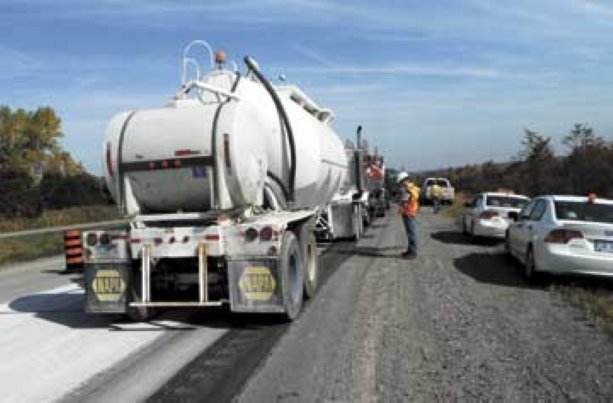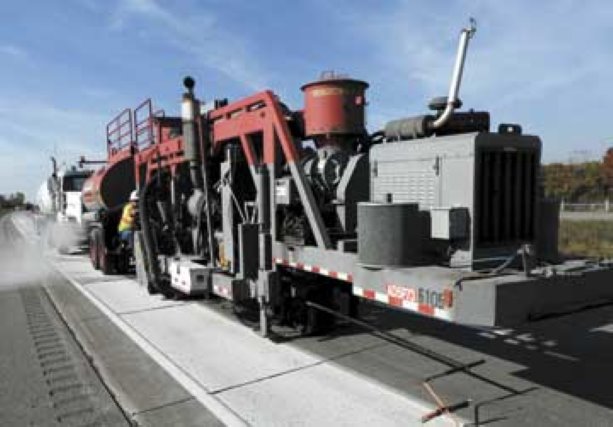Diamond grinding was first demonstrated as a viable large-scale technology on concrete roads in California in the mid-1960s. Applied to new concrete or asphalt roads, applied after other road remediation techniques are completed, or simply performed alone as a remediation technology, the process can make roads more drivable and lengthen road lifespan. Grinding can smooth irregularities such as ruts, cracks, concrete panels raised at joints, and depressions where water pools. It can also improve surface texture and skid resistance, while reducing traffic noise.
Because the technology was developed for concrete highways more common south of the border, the economies of scale favoured the development of U.S.-based road grinding companies. As a result, most current Canadian projects are handled by U.S. companies with the experience and equipment required to take on the work.
The Graff Company of Toronto recently joined forces with North America’s largest road grinding organization, U.S.-based Penhall Company, to establish a presence in the local road grinding market.
“Penhall already had a significant presence in Canada,” says John MacDonald, division manager of the Graff Company. “They’ve completed several projects in Winnipeg, and more recently we’ve been working on a six-week grinding contract on 26 miles of concrete-paved Highway 115 near Peterborough. They’ve also taken on the specialized grinding required for racetracks such as Ontario’s Grand Bend Motorplex and Budweiser Motor Sports Park in Edmonton.”
In the past, much of the Canadian work has been performed by Penhall branches located in Minneapolis and Atlanta. The Penhall partnership allows Graff to leverage a larger equipment pool and the latest industry techniques from a Canadian base, using Canadian crews.
Diamond grinding utilizes about 200 diamond-tipped blades aligned on a cylindrical shaft, which cut tiny grooves into the road surface. The blades remove elevated areas in the pavement, and leave the surface with the texture of corduroy.
MacDonald says he still frequently needs to point out that the equipment isn’t performing a road milling operation.
“Milling is an impact process, while grinding is a cutting process,” he says. “Optimally, you could grind the same road surface three times over 50 years, taking off less than a centimetre each time and extend road life by decades.”
The process is part art and part science. The grinding heads are computer-controlled to provide the exact drainage profile or surface texture required by the owner. However, operators keep their eyes on the road, seated close to the surface to make sure the end result satisfies the goals of the contract. An operator also needs a good eye to handle unusual challenges, including complex grade changes, exact road tilt (super elevation), and areas that span different materials — asphalt and concrete, for example.
An 8,000-gallon water tanker follows close behind, providing water required to cool the diamond head cutters. The grinding process creates a slurry composed of water and road material particles that is immediately vacuumed off the road surface and pumped back into the tanker. The tanker is designed to remove the solids from the slurry, recycling the same cooling water over and over.
The road is typically ready for traffic the moment it’s dry. Since the equipment cleans as it grinds, traffic can resume with little delay.
Road grinding technology continues to evolve. Where once road grinders cut paths of only three feet across, newer equipment cuts a path four feet across. Typically, three machines can now grind a single lane simultaneously.
“With the recent transfer of a G-38 road grinder to Toronto, the Graff crew is now positioned to provide bump-grinding to the Ontario market and beyond,” says Dave Neal, a vice-president with Penhall Company. “The G-38 is geared toward smaller projects and remedial grinding on new pavement. We hope to develop the market with that unit and then look at bringing in larger equipment on a permanent basis.”

1/2
more drivable and lengthen road



Recent Comments
comments for this post are closed